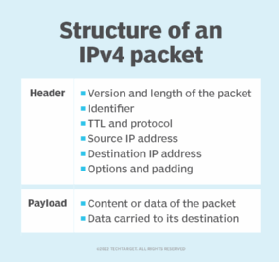signal-to-noise ratio (S/N or SNR)
What is the signal-to-noise ratio?
In analog and digital communications, a signal-to-noise ratio, often written S/N or SNR, is a measure of the strength of the desired signal relative to background noise (undesired signal). S/N can be determined by using a fixed formula that compares the two levels and returns the ratio, which shows whether the noise level is impacting the desired signal.
The ratio is typically expressed as a single numeric value in decibels (dB). The ratio can be zero, a positive number or a negative number. A signal-to-noise ratio over 0 dB indicates that the signal level is greater than the noise level. The higher the ratio, the better the signal quality.
For example, a Wi-Fi signal with S/N of 40 dB will deliver better network services than a signal with S/N of 20 dB. If a Wi-Fi signal's S/N is too low, network performance can be impacted because it becomes more difficult for devices to distinguish the desired signal from the noise. This can result in dropped packets and data retransmissions, leading to lower throughput and higher latency.
Noise includes any unwanted disturbance that degrades the quality of the desired signal. It can include thermal, quantum, electronic, impulse or intermodulation noise, as well as other forms of noise. Environmental factors, such as Temperature and humidity, can also affect noise levels.
If the noise is significant enough in comparison to the desired signal -- that is, S/N is low -- it can disrupt a wide range of data transfers, including text files, graphics, telemetry, applications, and audio and video streams.

Communications engineers always strive to maximize S/N. Traditionally, this has been done by using the narrowest possible receiving-system bandwidth consistent with the data speed desired. However, there are other methods. For example, engineers might use Spread spectrum techniques to improve system performance, or they might boost the signal output power to increase S/N.
In some high-level systems, such as radio telescopes, internal noise is minimized by lowering the temperature of the receiving circuitry to near-absolute zero (-273 degrees Celsius or -459 degrees Fahrenheit). In wireless systems, it is always important to optimize the performance of the transmitting and receiving antennas.
How do you calculate the signal-to-noise ratio?
The signal-to-noise ratio is typically measured in decibels and can be calculated by using a base 10 logarithm. The exact formula depends on how the signal and noise levels are measured, though.
For example, if they're measured in microvolts, the following formula can be used:
S/N = 20 log10(Ps/Pn)
Ps is the signal in microvolts, and Pn is the noise in microvolts.
However, if the signal and noise are measured in watts, the formula is slightly different:
S/N = 10 log10(Ps/Pn)
The letter P is often used in these formulas to indicate power.
When Ps equals Pn, S/N will be 0. A ratio of 0 dB indicates that the signal is competing directly with the noise level, resulting in a signal that borders on unreadable. In digital communications, this can cause a reduction in data speed because of frequent errors that require the transmitting system to resend data packets.
When Ps is greater than Pn, S/N will be positive. Ideally, Ps should be much greater than Pn to minimize noise interference. As an example, suppose that Ps equals 10 microvolts and Pn equals 1 microvolt. Because 10 divided by 1 equals 10, the following formula can be used to calculate S/N:
S/N = 20 log10(10) = 20 dB
A ratio of 20 dB means that the signal is clearly readable. If the signal is much weaker but still above the noise level -- say, 1.3 microvolts -- S/N is much lower, in this case, only 2.28 dB:
S/N = 20 log10(1.3) = 2.28 dB
This is a marginal situation that could impact network performance, although it's not the worst possible situation. When Ps is less than Pn, S/N is negative, a low signal-to-noise ratio. In this type of situation, reliable communication is nearly impossible, and steps should be taken to increase the signal level, decrease the noise level or implement a combination of both.






